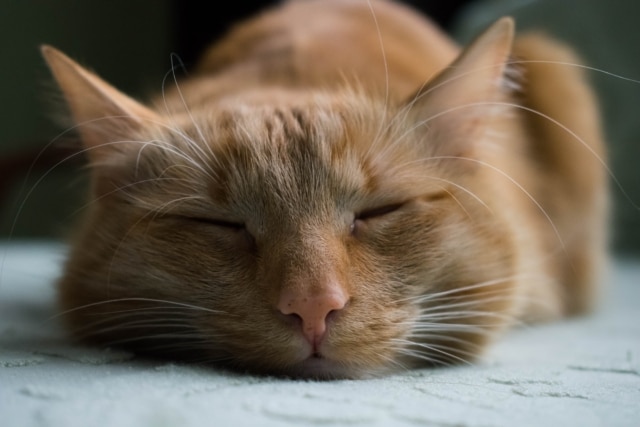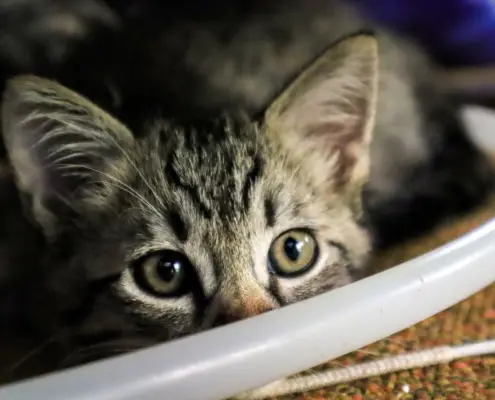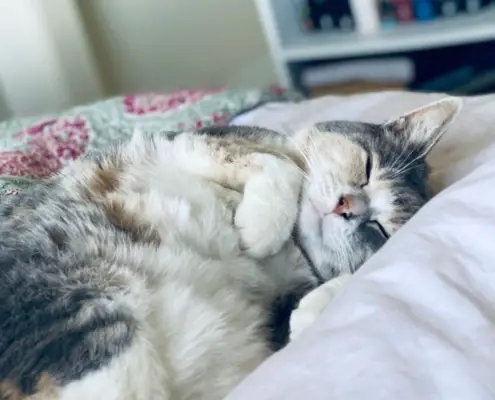
Cats are known for their independent and mysterious nature, but sometimes they exhibit behavioral issues that can be concerning for their owners. Understanding these common behavioral issues is the first step towards addressing them effectively. One of the most common behavioral issues in cats is aggression. This can manifest as biting, scratching, or hissing, and can be directed towards humans or other animals. Another common issue is inappropriate elimination, where cats urinate or defecate outside of their litter box. Excessive meowing, destructive scratching, and anxiety-related behaviors are also frequently observed in cats. By understanding these behavioral issues, cat owners can take proactive steps to address them and create a happier environment for their feline companions.
Addressing behavioral issues in cats is not just about preventing annoyance or inconvenience – it is crucial for the overall well-being of the cat. Untreated behavioral issues can lead to stress, anxiety, and even physical health problems for cats. For example, a cat that engages in excessive scratching may develop skin infections or injuries. Similarly, a cat that displays aggression may become isolated and withdrawn, leading to a decline in their overall quality of life. By addressing these issues promptly, cat owners can ensure that their feline friends live a happier and healthier life.
Identifying the root cause of behavioral issues in cats
To effectively address behavioral issues in cats, it is essential to identify the root cause behind their behavior. Cats can exhibit problematic behaviors due to various reasons, such as fear, stress, boredom, or medical conditions. For example, a cat that urinates outside of the litter box may be suffering from a urinary tract infection or have a litter box aversion due to its placement or cleanliness. Similarly, a cat that displays aggression may be reacting out of fear or territorial instincts. By observing the cat’s behavior and consulting with a veterinarian, owners can determine the underlying cause and tailor their approach accordingly.
Creating a safe and stimulating environment for your cat
Creating a safe and stimulating environment is crucial for addressing behavioral issues in cats. Cats need an environment that allows them to express their natural behaviors and engage in physical and mental stimulation. Providing a variety of toys, scratching posts, and climbing structures can help cats satisfy their hunting and scratching instincts. Additionally, creating vertical spaces such as cat trees or shelves can give cats a sense of security and territory. Ensuring that the litter box is easily accessible, clean, and in a quiet area can also help prevent litter box aversion. By providing a stimulating and safe environment, cat owners can help alleviate behavioral issues and promote a happier feline companion.
Positive reinforcement techniques for addressing behavioral issues
Positive reinforcement techniques are effective in addressing behavioral issues in cats. Punishment-based methods can create fear and anxiety, exacerbating the problem behavior. Instead, rewarding desirable behaviors with treats, praise, or playtime can motivate cats to repeat those behaviors. For example, if a cat has a tendency to scratch furniture, redirecting their attention to a scratching post and rewarding them for using it can help deter the unwanted behavior. Similarly, if a cat tends to meow excessively for attention, providing attention only when they are calm and quiet can reinforce the desired behavior. Consistency and patience are key when using positive reinforcement techniques, as it may take time for cats to understand and adapt to the new behavior expectations.
Training and socialization for cats with behavioral issues
Training and socialization are crucial for cats with behavioral issues. Socializing a cat from an early age can help them become comfortable with various people, animals, and environments. This can reduce fear and anxiety-related behaviors, such as aggression or hiding. Training can also play a significant role in addressing behavioral issues. Teaching basic commands, such as “sit” or “stay,” can help establish boundaries and promote positive behaviors. Additionally, training can be used to redirect unwanted behaviors towards more appropriate alternatives. For example, teaching a cat to come to a specific spot when called can be a helpful technique for preventing them from jumping on countertops or furniture. By investing time and effort into training and socialization, cat owners can help their feline companions overcome behavioral issues and become well-adjusted pets.
Seeking professional help for severe behavioral issues in cats
In some cases, behavioral issues in cats may be severe or difficult to address without professional intervention. If a cat’s behavior poses a risk to themselves or others, it is crucial to seek the help of a professional, such as a veterinarian or a certified animal behaviorist. These experts can assess the cat’s behavior, identify the underlying causes, and develop a personalized behavior modification plan. They may also recommend additional interventions, such as medication or specialized training techniques, to address the behavioral issues effectively. Seeking professional help is essential for ensuring the safety and well-being of the cat and preventing the escalation of problematic behaviors.
Natural remedies and supplements for calming anxious cats
For cats with anxiety-related behavioral issues, natural remedies and supplements can be a helpful addition to their treatment plan. Some cats may benefit from pheromone products, such as synthetic feline facial pheromones, which can create a calming effect and reduce stress-related behaviors. Herbal remedies, such as valerian or chamomile, can also have a soothing effect on cats. However, it is important to consult with a veterinarian before introducing any natural remedies or supplements, as they can interact with other medications or have adverse effects on certain cats. A professional can provide guidance on the appropriate dosage and usage of these products to ensure their safety and effectiveness.
Preventing future behavioral issues in cats
Prevention is key when it comes to addressing behavioral issues in cats. By implementing proactive measures, cat owners can reduce the likelihood of future issues arising. Regular veterinary check-ups can help identify and address any underlying medical conditions that may contribute to behavioral problems. Maintaining a consistent routine for feeding, playtime, and interaction can provide cats with a sense of security and stability. Ensuring that cats have access to appropriate outlets for their natural behaviors, such as scratching posts or toys, can help prevent destructive behaviors. Additionally, providing mental stimulation through puzzle toys or interactive play sessions can keep cats engaged and prevent boredom-related issues. By taking preventive measures, cat owners can set their feline companions up for a lifetime of good behavior and well-being.
A happier and well-behaved feline companion
Addressing behavioral issues in cats requires understanding, patience, and a proactive approach. By identifying the root cause of the behaviors, creating a safe and stimulating environment, using positive reinforcement techniques, and seeking professional help when needed, cat owners can address these issues effectively. Natural remedies and supplements can also provide additional support for cats with anxiety-related behaviors. By taking preventive measures and investing in training and socialization, cat owners can prevent future behavioral issues from arising. Ultimately, the goal is to create a happier, well-behaved feline companion that brings joy and companionship to their owners. With the right strategies and expert guidance, cats and their owners can enjoy a harmonious relationship for years to come.
If you are experiencing behavioral issues with your cat, don’t hesitate to consult with a veterinarian or certified animal behaviorist. They can provide personalized advice and guidance to help address the specific needs of your feline companion. Remember, a happier cat means a happier you!
If you enjoyed my article, I would appreciate you sharing it with your network.

Sima Ndlebe
Sima writes for CatBuzz. He is interested in Cats, Health and Fitness, and Entrepreneurship.
Published: 12 October 2023
Related Articles
Disclaimer
The content found on CatBuzz.org is presented on an "as is" basis and is intended for general consumer information and education purposes only. Any utilization of this information is voluntary and solely at the user's own risk.
None of the articles or content should be regarded as, or used in place of, veterinary medical advice, diagnosis, or treatment. The information provided on the website is purely for educational and informational intentions and should not be considered a substitute for professional guidance from a veterinarian or other qualified expert. The articles are designed to inform consumers about veterinary healthcare and medical matters that may impact their cat's daily life. It should be noted that this website and its services do not constitute the practice of any form of veterinary medical advice, diagnosis, or treatment. CatBuzz.org explicitly disclaims any liability for any direct or indirect damages or losses that may arise from the use of or reliance on the information contained within the content.
Consumers must consult a veterinarian, veterinary specialist, or another qualified veterinary healthcare provider when seeking advice regarding their cat's health or medical conditions. It is important not to ignore, avoid, or postpone seeking medical advice from a veterinarian or other qualified veterinary healthcare provider solely based on information obtained from this website. If you believe that your cat may be experiencing a medical issue or condition, it is imperative to promptly contact a qualified veterinary healthcare professional.



